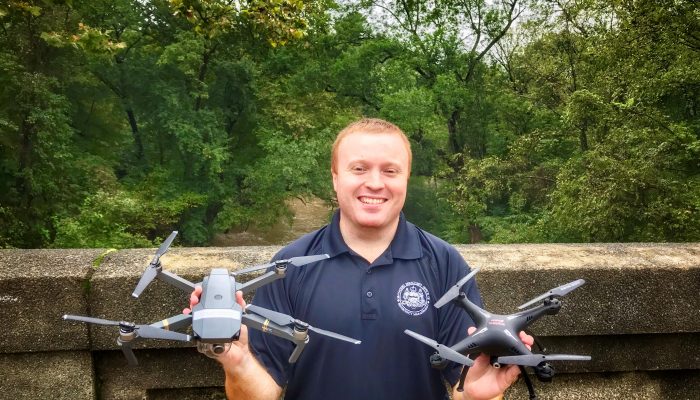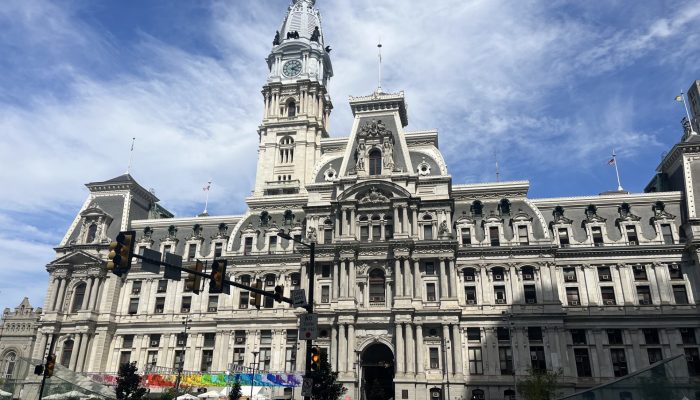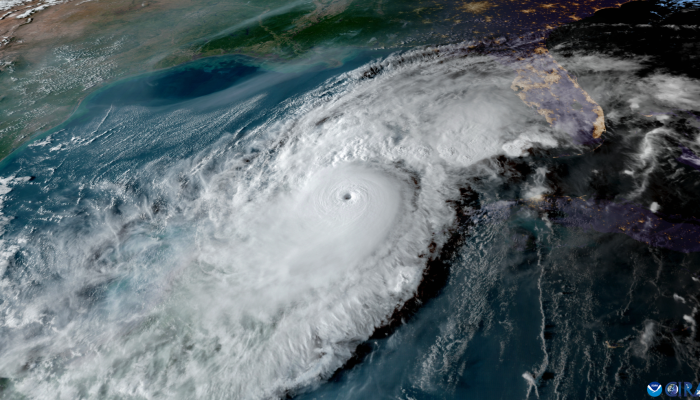By Justin Friend, Regional Integration Center Coordinator, Philadelphia Office of Emergency Management | September 26, 2018
Drones are becoming commonplace in our everyday lives, both for play and professional use.
Not only do they provide a leisure activity, but drones give us an elevated perspective away from the limitation of having our feet firmly on the ground.
Drones are a lot of fun to fly and those with video capability provide us with fresh, intriguing views.
However, it is important to remember that you are controlling a real aircraft that is regulated by the Federal Aviation Administration (FAA).
Given that small unmanned aircraft systems (sUAS) or drones are occupying more time in the sky, it is essential to know safety rules and regulations to fly safely and responsibly.
To help become educated on the do’s and don’ts of drone usage, I’ve outlined information from the FAA and City of Philadelphia to help you get started in safely flying your aircraft.
What is the difference between commercial and recreational flying?
- Recreational flying falls under the FAA’s Special Rule for Model Aircraft. This provision allows for modeler or recreational flights only.
- Commercial flying falls under the FAA’s Small UAS Rule To fly your drone for commercial purposes, you will need to acquire a small unmanned aircraft systems (sUAS) certificate, also referred to as the Part 107 certificate. The FAA offers free training materials to help prepare for the knowledge test required for all applicants.
What does it mean when the City declares an outdoor event as a temporary No Drone Zone?
- A No Drone Zone means that recreational pilots (Section 336) cannot fly in this area during event hours. Commercial Pilots flying under the Part 107 rules can fly provided the pilot holds an approved FAA Waiver and have notified the City through the Philadelphia UAS Notification Form. No Drone Zones are used to help ensure the safety of event participants.
Where should I fly?
- Know your flight area. You should never fly more than 400 feet above ground level (AGL) as a modeler. Commercial pilots may fly over 400ft AGL with the appropriate waiver from the FAA. Some areas of Philadelphia restrict drone operations to heights less than 400 feet AGL or prohibit operations altogether. Always consult the FAA’s sUAS map and download the FAA’s B4UFly mobile app for more information. You may also want to check for any Temporary Flight Restrictions (TFRs) and Notices to Airmen (NOTAMs).
- Modelers should never fly over crowds or sporting events. Commercial pilots require FAA waivers to fly over crowds or sporting events.
- Flying over or near an active emergency scene is prohibited.
When should I fly?
- As a rule, only fly during the day and never fly beyond visual line of sight (VLOS). Keep up with weather conditions.
- Commercial pilots can fly during civil twilight with anti-collision lighting. Keep in mind that that lighting must strobe or blink in a red or white color to be considered anti-collision lighting. Be sure that the light(s) are visible from all directions.
- Commercial pilots may only fly after civil twilight with an FAA waiver.
How can I safely fly?
- ALWAYS yield to manned aircraft.
- Never fly your drone after consuming alcohol.
- Keep your drone within visual line of sight (VLOS) at all times.
- Keep your drone under 55 pounds.
- Register your drone with the FAA Drone Zone.
- Inspect your drone. Conduct a preflight check of your drone to ensure a safe flight.
- Pay special attention to your batteries. If there is any sign of damage or unpredictable voltage, do not use the unit and safely dispose of the battery. A reminder to practice a “carry in, carry out” rule when using a drone. All items of your kit that are brought to the launch/land area should be removed when you are ready to leave.
- Plan your flight! There are a variety of flight log books and apps which will help you plan your flight. Remember, plan your flight and fly your plan!
- Be a good member of the UAS Community. If flying as a modeler, be sure that you are up to date on community guidelines of safe flight. A good resource for this information is the Academy of Model Aeronautics, which also offers locations of local flying clubs and insurance for recreational pilots.
- Bring your documentation. Much like flight planning, documentation is critical to ensuring a good flight session. Below is a list of documents to have on-hand:
- Hobbyist Pilots
- Government Issued ID
- UAS Registration (if applicable)
- Commercial Pilots
- Government Issued ID
- Remote Pilot Certificate
- UAS Registration (if applicable)
- Any approved flight waivers (if applicable)
Who should I contact?
- Before flying, check if you are near active airports, helipads, or other facilities which require notification prior to a safe flight. Controlled airspace near the Philadelphia International Airport (PHL) and Northeast Philadelphia Airport (PNE) falls under FAA’s Low Altitude Airspace Notification Capability (LAANC). As always, keep an eye out for Temporary Flight Restriction (TFR) areas and be mindful of helipads on top of buildings (like hospitals, for example).
- Remember that taking off or landing on private property would require the permission of the property owner prior to the flight session.
- If there is an accident with damage the operator – modeler or commercial – should follow these steps:
- Notify the FAA within 10 days if the accident results in serious injury to any person or causes damage to any property (other than the sUAS) more than $500. The FAA UAS Accident Report can be filed through the FAA Drone Zone.
- The City is to be notified of any personal injuries or damage to property (other than the sUAS). The Philadelphia Police Department will be able to assist you with completing a report. Contact 9-1-1 for emergencies and 3-1-1 for non-emergencies.
- Notify the private property owner of any damages.
Justin Friend works in the Philadelphia Office of Emergency Management’s Regional Integration Center, or the RIC.
Among many other responsibilities, the RIC is a 24/7 watch command that keeps the city’s first-responders informed of important emergency information and Philadelphia’s residents safe through the city’s free mass notification system, ReadyPhiladelphia.
Friend, who has been building and flying model aircraft since grade school, is a licensed Part 107 sUAS operator who has enjoyed flying drones for five years.
The Federal Aviation Administration and Philadelphia Police Aviation Unit contributed to this blog.




